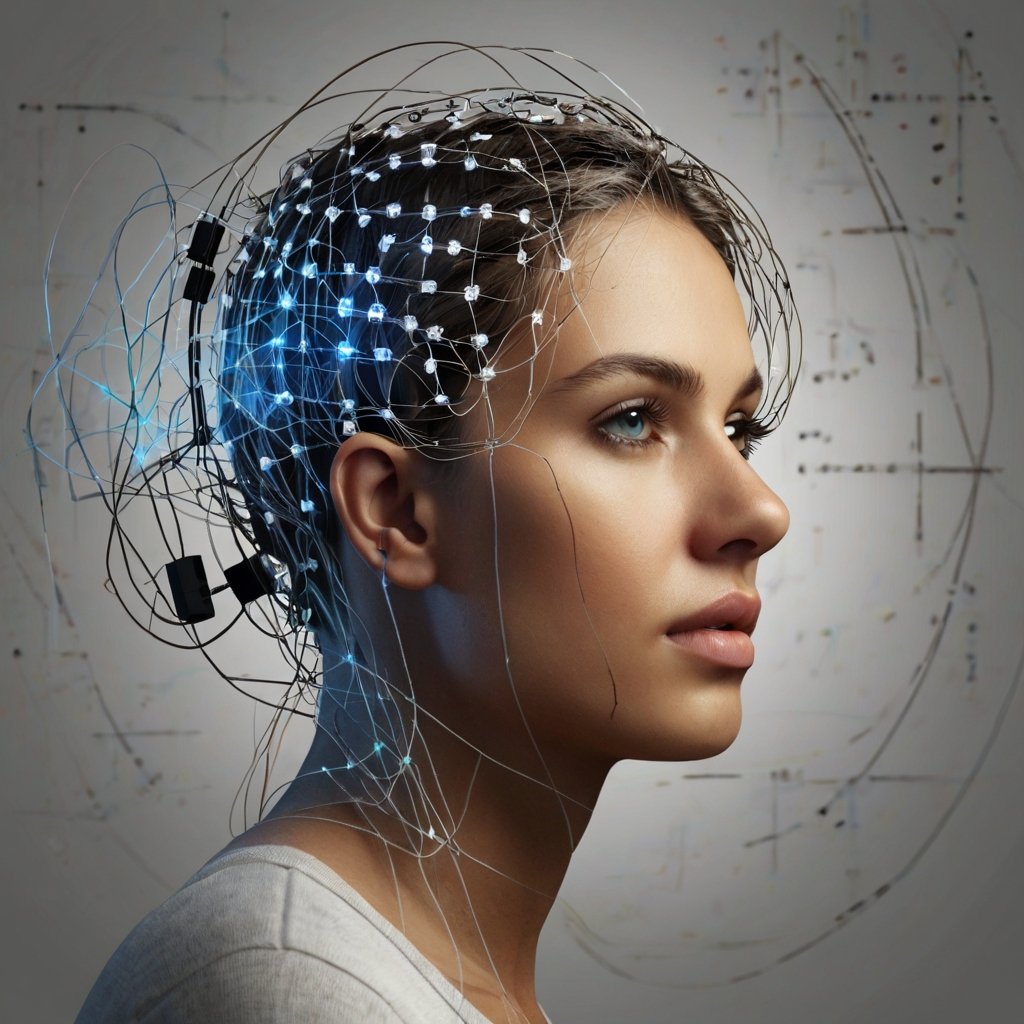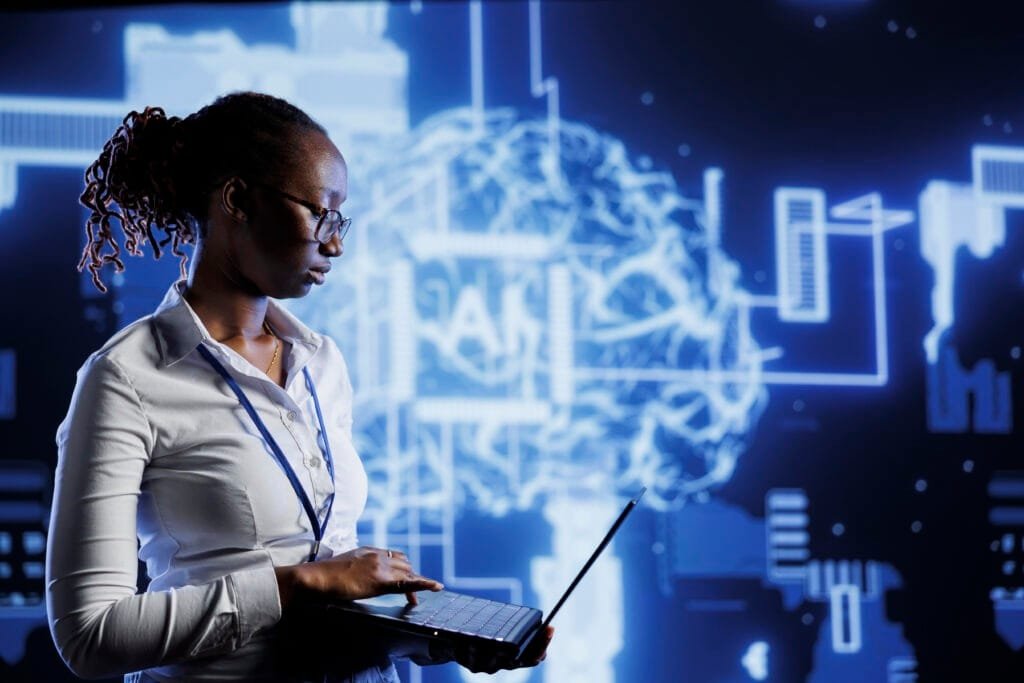In the 1970s, Jacques Vidal introduced the concept of direct brain-computer communication. Back then, it was largely theoretical and a glimpse into a distant future. But today, what once belonged in science fiction labs is becoming real. Brain-machine interfaces (BMIs), and more recently bidirectional BMIs (BBMIs), are creating new ways for the brain to interact with technology. Through them, machines no longer just respond to thought but can now communicate back to the brain.
This technology, emerging from decades of neuroscience and engineering research, is beginning to show real-world potential. It could reshape how humans heal from injury, learn new skills, interact with computers, and even consume products. But the journey from lab to everyday use is complex, with hurdles in privacy, cost, and ethics.
The Workings of BBMIs
Brain-machine interfaces interpret brain activity to control external devices. Most existing systems operate in a unidirectional manner, where they capture neural signals and translate them into commands. Bidirectional interfaces, on the other hand, extend this capability. They add a feedback loop, encoding information such as sensory data back into the brain, enabling two-way communication. This development makes it possible for prosthetics, for instance, to deliver touch sensations to the user.
Two major approaches are used in BBMIs: invasive and non-invasive. Invasive systems involve surgically implanted electrodes. These can provide highly accurate readings and precise stimulation, but they carry surgical risks and long-term maintenance challenges. The implant reads high-resolution brain signals and delivers electrical feedback, potentially addressing both motor disabilities and cognitive disorders.
Non-invasive systems use external sensors, such as electroencephalography (EEG) or functional near-infrared spectroscopy (fNIRS), placed on the scalp. These devices are safer and more accessible, but typically offer lower resolution and less precise control. They are well-suited for consumer applications, including gaming, education, and neuromarketing.
At the heart of both approaches is signal processing powered by machine learning. Because brain signals vary widely across individuals and time, adaptive algorithms are essential. These systems learn to interpret complex neural patterns, improving over time as they gather more data from the user.
Momentum and Investment
Over the last decade, investment and research in BBMIs have accelerated. Startups, research labs, and government agencies are devoting increasing resources to development and testing. The most visible private player is Neuralink, whose device has garnered attention for its ambition to connect the brain directly to computers. Neuralink’s approach is invasive, using thousands of thin electrodes implanted in the cortex. In addition to aiding patients with paralysis, the company sees future applications in enhancing memory, treating neurological diseases, and possibly achieving human-machine symbiosis.
Synchron, another U.S.-based firm, has taken a different approach. Its Stentrode device is inserted via blood vessels, making it less invasive than Neuralink’s method. The device sits near motor areas of the brain and allows patients to control digital devices without open-brain surgery. Synchron became the first company to receive FDA approval for human trials of a permanently implanted BMI in the United States.
Paradromics, also based in the U.S., is building high-throughput systems focused on restoring communication in individuals with severe disabilities. Their approach aims to capture vast quantities of brain data to power fast, reliable digital communication.
Public research agencies are also involved. DARPA, the U.S. Defense Advanced Research Projects Agency, has funded multiple BMI programs for both medical rehabilitation and military readiness. In Europe, the Human Brain Project has provided funding to support scalable BMI research tied to neuroethical standards.
Academic labs continue to produce vital breakthroughs. At the University of Pittsburgh, researchers restored tactile sensations in prosthetic users through targeted stimulation. At Johns Hopkins, digital holographic imaging has enabled neural recordings through the skull, a step toward higher-resolution non-invasive systems.
Practical Applications
Medical Rehabilitation
The most immediate and well-documented use of BBMIs is in medical rehabilitation. For patients who have lost motor function due to stroke, spinal cord injury, or disease, BBMIs offer hope.
In trials using the BrainGate system, paralyzed individuals have controlled robotic arms using only their thoughts. In some cases, they have completed complex tasks, like drinking from a bottle or manipulating small objects. Meanwhile, BBMIs that restore sensory feedback make prosthetics feel more natural, improving dexterity and ease of use.
Communication is another major benefit. For individuals with locked-in syndrome, BBMIs offer a path to express thoughts. These interfaces can map brain signals to words or commands, enabling users to communicate via computer interfaces, often faster than traditional assistive technologies.
Human Upskilling
Though still experimental, BBMIs are being explored for cognitive enhancement. The aim is not to restore lost function, but to boost existing capabilities.
Research on memory and attention has shown that electrical stimulation of specific brain regions can aid in memory consolidation. Neuralink has expressed interest in using this technology for broader enhancement, though clinical data is limited.
Another area is skill acquisition. The theory is that, by stimulating regions involved in motor learning, users may learn tasks like playing a musical instrument or mastering a sport more quickly. However, results remain preliminary, and ethical concerns around fairness and long-term effects have slowed public adoption.
Marketing and Consumer Use
Marketers have taken an early interest in BMIs, particularly for neuromarketing, the use of brain signals to gauge consumer reactions.
By analysing neural responses to advertisements or products, firms can gain insights beyond self-reported preferences. EEG-based devices have been used to measure emotional engagement, attention span, and brand recall.
In the future, BBMIs could make immersive experiences more intuitive. In augmented or virtual reality, a user could “try” products by thought, navigating environments, or triggering feedback through intention rather than physical movement. While this opens new opportunities, it also raises deep concerns about brain data privacy. Who owns the raw neural data collected from consumers? How is consent secured?
Enhancing Accessibility
BBMIs are proving especially valuable in improving accessibility for people with disabilities. They allow for new modes of control, communication, and interaction.
Wheelchair users, for instance, can steer their chairs using thought-based commands. Similarly, prosthetic limbs with bidirectional feedback allow more nuanced and coordinated movement, replicating the natural experience of limb use.
In communication, BBMIs continue to push boundaries. For individuals unable to speak or type, thought-to-text systems offer a path to re-enter conversations, education, and employment.
These improvements may also support aging populations. As cognitive and motor decline set in, BBMIs could help maintain autonomy, reducing dependency and improving quality of life.
Ethical and Technical Hurdles
Despite their promise, BBMIs face serious technical and ethical challenges.
On the technical side, signal decoding remains a bottleneck. Neural signals are complex and context-dependent. Even the best algorithms struggle with long-term accuracy. Moreover, implanted electrodes degrade over time, raising issues of durability and maintenance.
Invasiveness is another concern. While companies like Synchron are working on less risky insertion methods, most high-performance systems still require surgery. This limits their use to severe cases or clinical research.
From an ethical standpoint, privacy is a key issue. BBMIs collect highly sensitive data—thoughts, intentions, even emotional states. There are no clear global regulations governing who owns or can process this data.
Consent becomes murky when brain data is being interpreted in real-time. Could users be manipulated by subtle feedback loops? Could employers or governments misuse this information?
Equity is also a concern. Advanced BBMI systems are costly and may remain so. If they become a means of cognitive enhancement, society may face a divide between those who can afford upgrades and those who cannot.
Lastly, the risk of misuse looms. In the wrong hands, BBMIs could become tools of surveillance, coercion, or even “brain hacking”. Regulators will need to move quickly to set boundaries before commercialisation expands further.
The Next Chapter
The next decade will likely see a transition from laboratory trials to broader clinical deployment, particularly in rehabilitation and assistive communication. Non-invasive systems will grow more capable, benefiting from new materials and imaging techniques. Algorithms will become more adaptive, increasing the reliability of interfaces in real-world settings.
Applications will also expand. Education, entertainment, and security are likely frontiers. Gamers may control complex environments through thought. Security professionals may use BBMIs for rapid response systems. Educators could monitor student attention levels in real time, raising further ethical concerns.
Crucially, this progress will need a parallel focus on regulation and public dialogue. Frameworks around data protection, consent, enhancement, and equitable access must be established. Otherwise, innovation could outpace safeguards, with lasting consequences for privacy and autonomy.
Bidirectional brain-machine interfaces represent a major shift in how humans interact with technology. Their potential spans medicine, communication, learning, marketing, and accessibility. Major firms and universities are investing heavily in their development, and the results so far are promising.
But for BBMIs to move from a niche field to a widespread solution, society must address the real technical, ethical, and political issues. If guided with care, these systems could redefine ability and reshape digital interaction for the better. If not, they risk becoming tools of inequality or intrusion.









